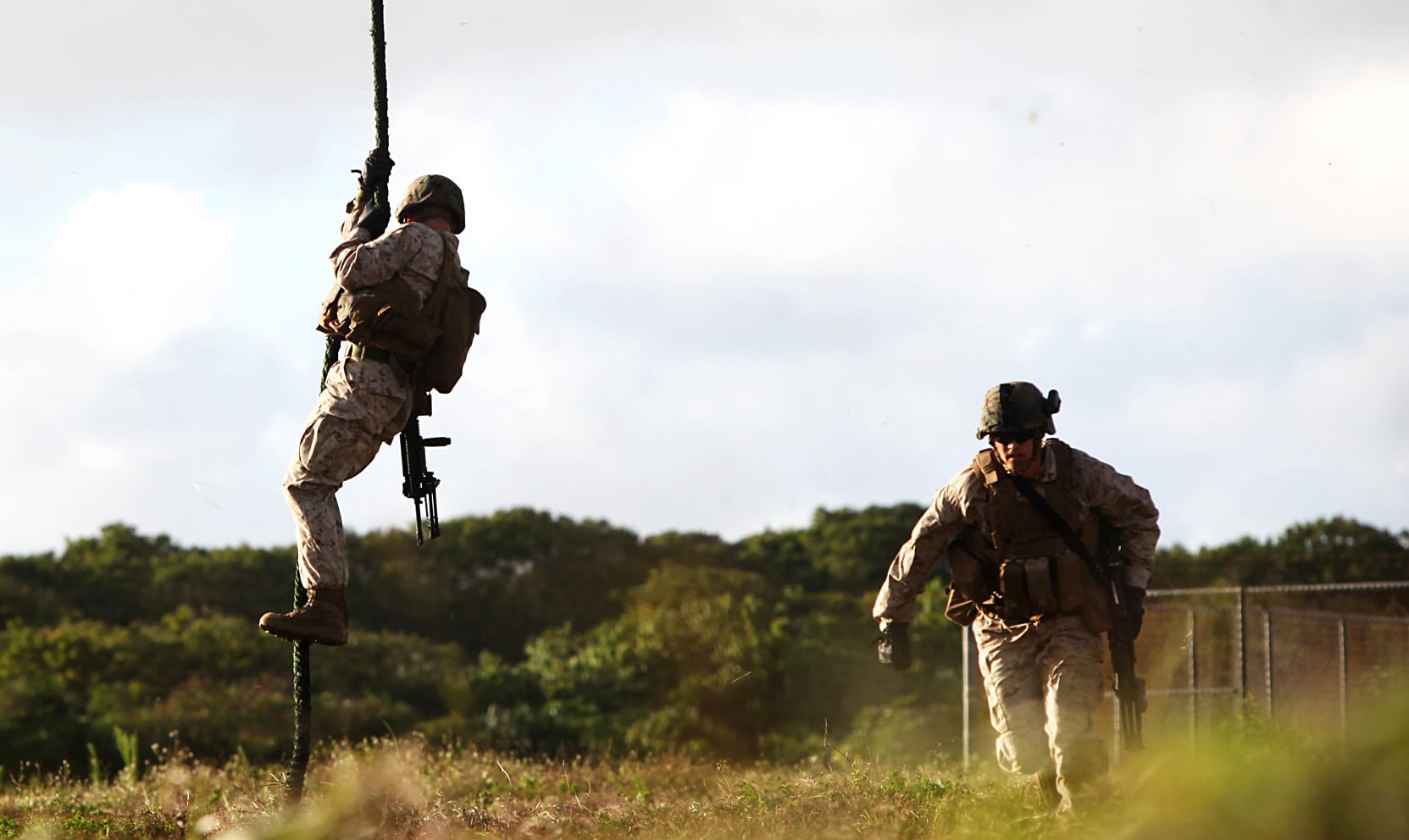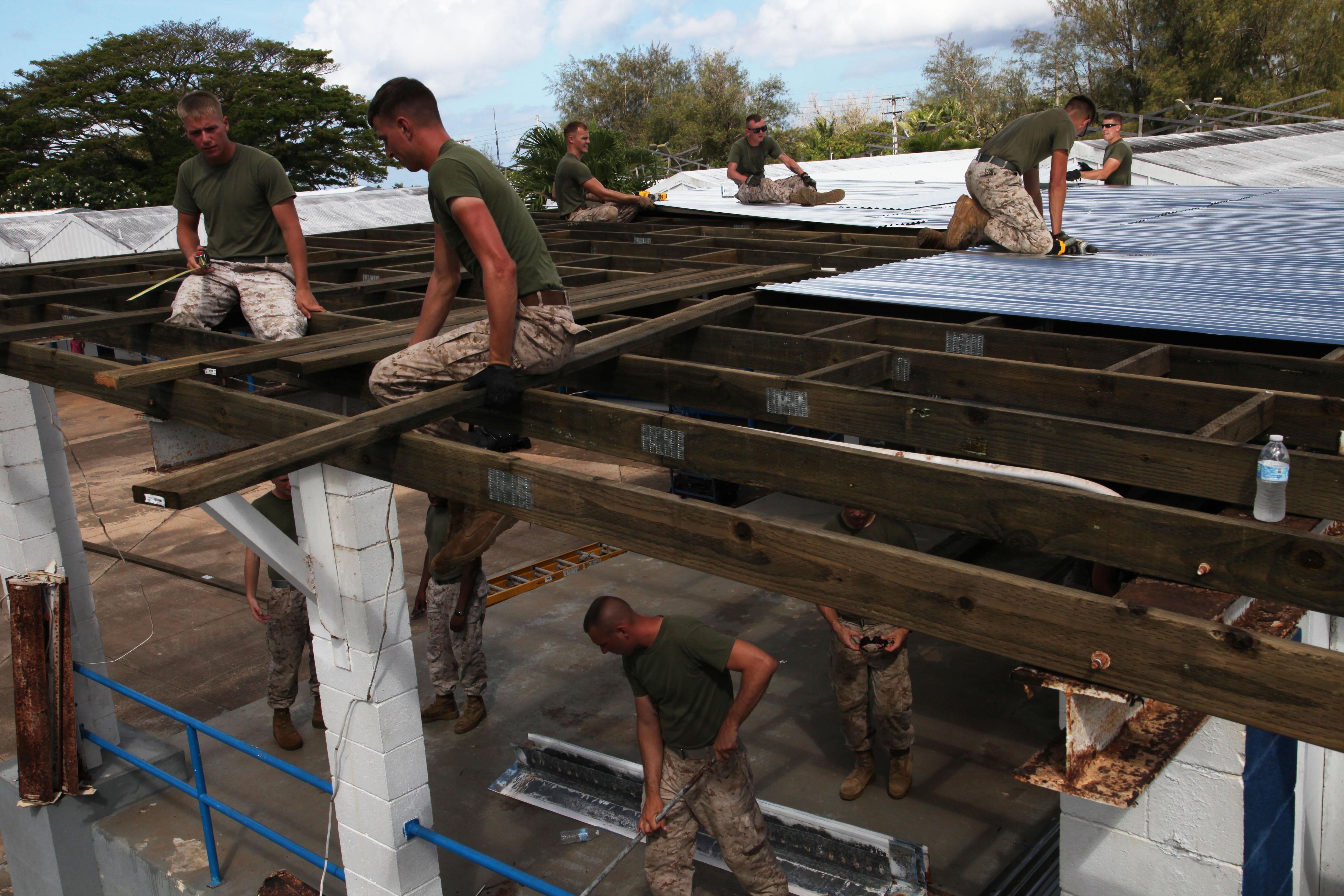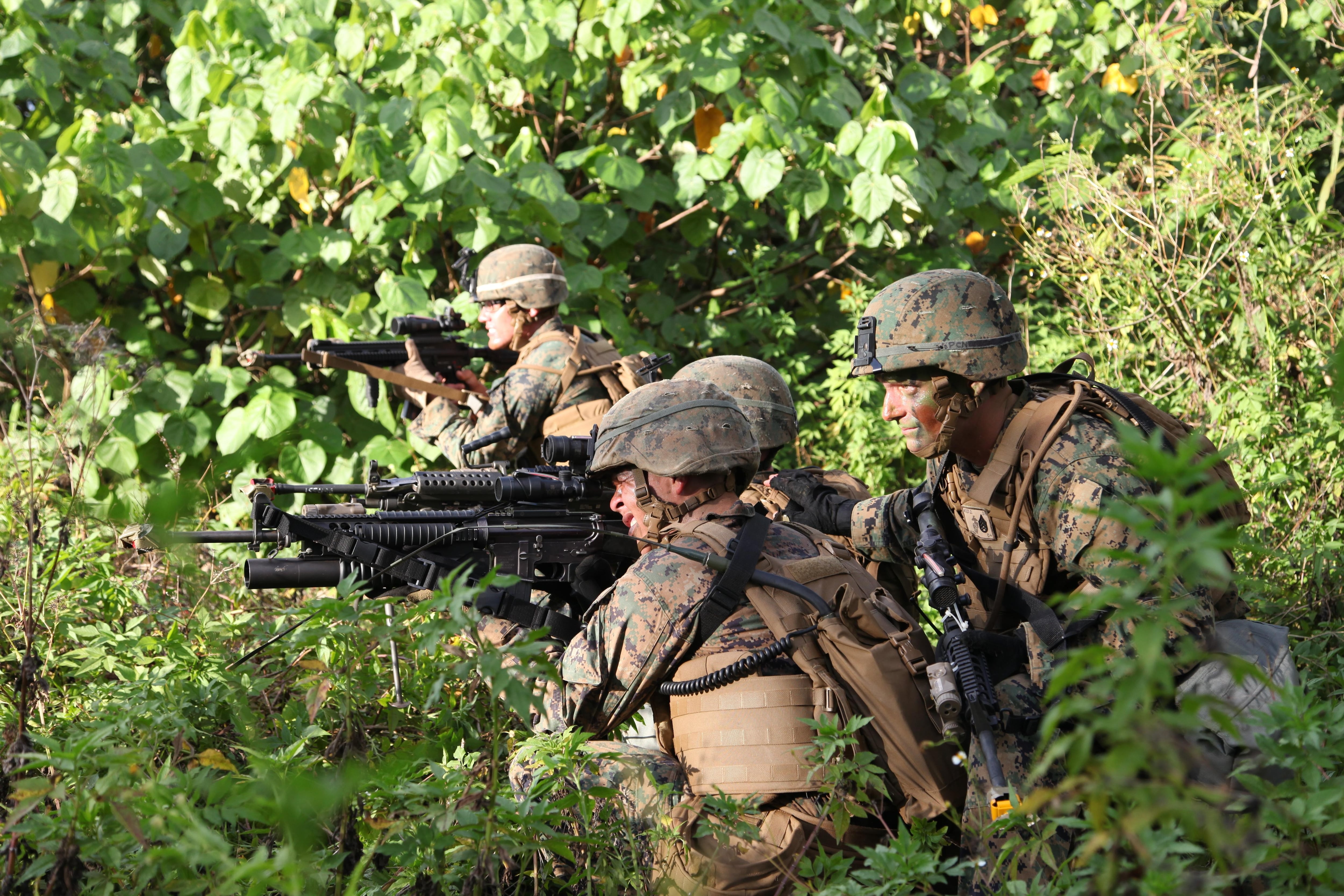It's official: The Navy has signed off Aug. 29 on a plan to move about 5,000 Marines and 1,300 family members from Okinawa, Japan,, and approximately 1,300 family members, to the island of Guam, a U.S. territory in the western Pacific.
The Navy Department released its Record of Decision Aug. 29 for relocating the Marines and their family members from Okinawa, Japan, to the U.S. territory in the western Pacific.
It's That's a smaller force than what the Marine Corps first proposed in 2009 when it wanted to send shift a brigade-sized force from Japan -- 8,600 Marines, and 9,000 dependents and from Okinawa plus 1,900 government workers -- to Guam by 2020. That would have put a full brigade-sized force on the island.
That idea prompted public outcry in Guam, home to about 15,000 military, and congressional criticism over the cost for new bases and infrastructure on the modestly populated island. In 2010, Rep. Hank Johnson, D-Ga., even went so far as to ask the head of U.S. Pacific Command at the time whether adding that many troops to the small territory would cause the island to tip over.
After By 2012, with additional studies and reviews, the plans were scaled back Marine Corps and Navy scaled down their plans, and Japan's government pledged to shoulder part of the cost.

Marines fast-rope out of a helicopter during a training exercise in Guam. The Marine Corps' initial plans called for about 8,600 Marines and 9,000 dependents to be based in Guam.
Photo Credit: Lance Cpl. Jenkins/Marine Corps
The moves are part of a larger rebalancing of forces in the Western Pacific that will would bolster air defenses and aviation capacity and add a wharf for visiting Navy aircraft carriers on Guam. What you need to know about the future force in Guam.
The Marine Corps plans to base infantry headquarters, aviation squadrons and logistics support units oin Guam. Marines train there routinely now, and the move will reduce the military presence on Okinawa, which some Japanese there view as burdensome.
"The Marine Corps has a historic friendship with the people of Guam," Lt. Gen. Ronald L. Bailey, the Corps' deputy commandant for Plans, Policies and Operations, said in an Aug. 29 announcement. "We look forward to continuing that partnership."
The moves are part of a larger rebalancing of forces in the western Pacific that would bolster Army air defenses and aviation capacity and add a wharf for visiting Navy aircraft carriers on Guam. What you need to know about the future force in Guam.
Who's going and when. goes when? Of the 5,000 Marines to live and train in Guam, only one-third of them will be there on permanent orders. That will mostly consist of three-year, family-accompanied tours assignments with families allowed, starting in 2020.
The other roughly 3,300 or so Marines who that head to Guam each year will of the Marines will arrive on six-month unit deployment rotations and use equipment and vehicles already in Guam. Those units will stagger so they don't all show up at the same time, similar to the way Marines currently rotate through Japan on the unit deployment program.
The number of Marines and dependents based in Guam there will increase each year and inching up through 2026, when the Corps reaches its goal of basing 5,000 Marines and 1,300 family members there. The biggest spike will occur between 2019 and 2020, when the total number of Marines based in Guam will jump from 387 to 2,990.
Over the next several years, the Corps will boost the number of Marines based there by 300 to 900 annually.
Slowed growth. That 13-year buildup is far slower than the original call e Navy's 28-page Record of Decision, which is part of a larger, final environmental impact statement, calls to move thousands of Marines and their families from Okinawa to Guam in just over 13 years rather than five years, as originally planned.
The Navy's new plan also curbs plans for more land acquisition and construction projects. Now Marines will live and train on It also puts Marines and puts them on land already controlled by the military.

Marines repair a stage at an elementary school in Guam during a military exercise there. Marine leaders say they are excited to strengthen the service's ties to the territory in coming years.
Photo Credit: Lance Cpl. Pete Sanders/Marine Corps
"This decision adopts all of the mitigation measures that were identified ... to avoid or minimize adverse environmental impacts," the Navy decision states.
Housing. Marine Corps families will be able to live in housing at Andersen Air Force Base, where about 510 acres will be set aside for construction of as many as 553 housing units.
Other construction will include housing for bachelors and other facilities in the nearby planned cantonment area covering 1,751 acres at the Naval Computer and Telecommunications site in the Finegayan area on the north side of in Guam's north.
Overall, the Marine Corps will have a smaller footprint rather than the 2,500-acre base first envisioned for the would be built on the island.
Training grounds. The places you'll train. Marines will access the 338-acre live-fire training range complex that will be built at , or LFTRC, in Andersen's Northwest Field. They'll also have access to a once that's developed on 338 acres, along with a hand-grenade range planned for Andersen South.

Staff Sgt. Owen Wood leads his Marines in a training raid on Andersen South during Exercise Guahan Shield in Guam. About 1,600 Marines will be based on Guam for three-year assignments starting in 2020. Another 3,300 Marines will deploy there each year on six-month rotations.
Photo Credit: Lance Cpl. Pete Sanders/Marine Corps
Additional studies will sort out access to historic sites within the range complex, which will include 3,701 acres for surface danger zones. Another 5,324 acres of federal land in the north will be protected for wildlife habitat.
Next steps. Defense Department officials will now draft ow comes the hard work crafting construction plans for military facilities and to expanding road networks and local infrastructure and getting interagency agreements in line. But not much will happen won't happen in earnest without Congress coughing up money for military construction and local infrastructure projects, something members have been hesitant to do without more concrete plans.





